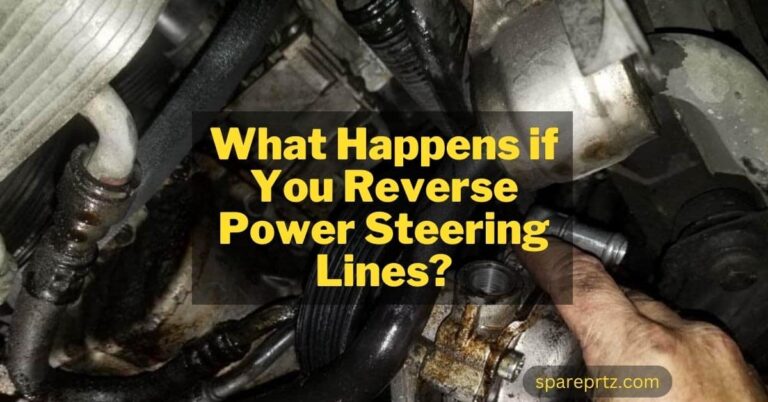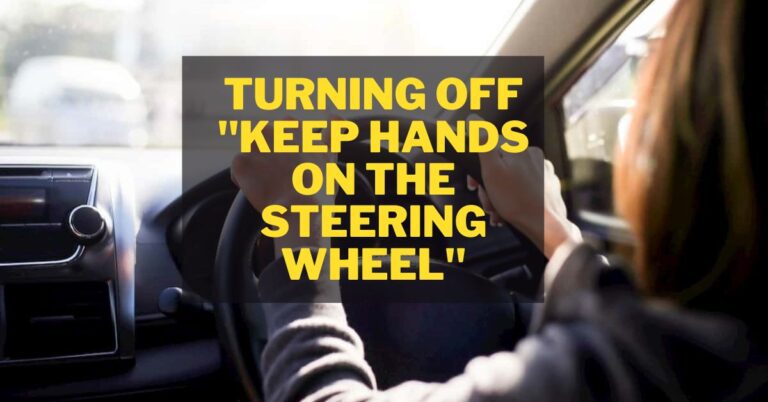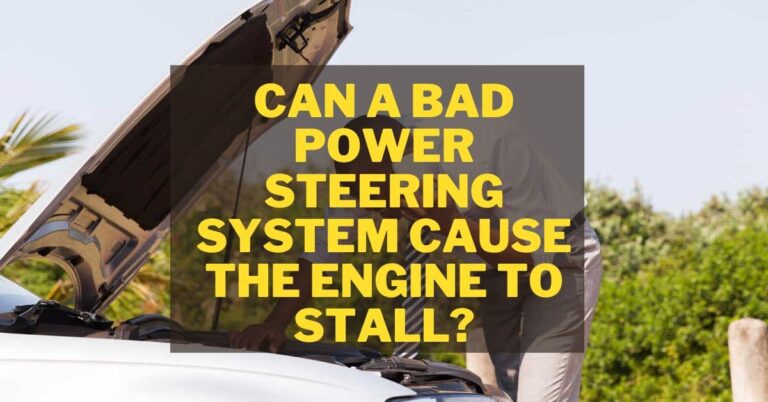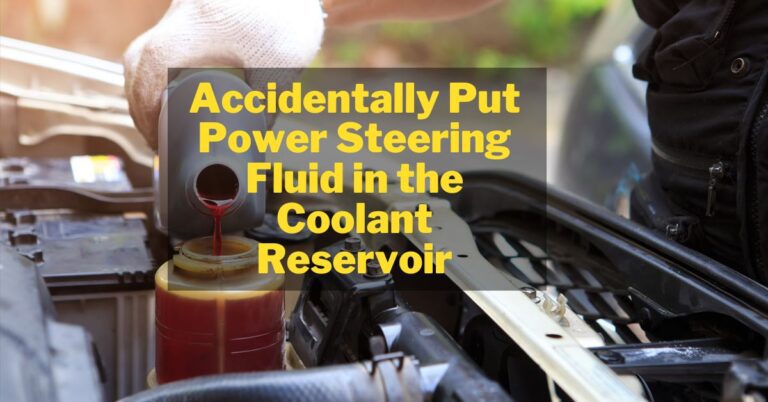Can a Blown Fuse Affect Electric Power Steering? Best Guide in 2024
When it comes to operating a car, some major components play significant roles, including the electric Power steering system. The power steering system helps you to steer your car with ease.
On the other hand, A fuse is a safety device in your car’s electrical system that protects the wiring and components from an electrical overload.
A fuse consists of a thin strip of metal that melts when an electrical overload breaks the circuit and prevents damage to the vehicle’s electrical system.
The short answer is yes, a blown fuse can affect electric power steering. If the fuse that controls the power steering system is blown, the motor that assists with turning the wheels will not function properly.
However, it’s important to note that a blown fuse does not always cause power steering issues. Other problems, such as a faulty power steering pump, low power steering fluid level, or a malfunctioning steering rack, could also be the culprit.
- 1 The Fuse of Power Steering Wheel – A Brief Introduction
- 2 How a Blown Fuse Can Affect the Electric Power Steering?
- 3 Signs and Symptoms of a Blown Fuse Affecting Power Steering:
- 4 How to Fix a Blown Fuse Affecting Electric Power Steering?
- 5 Video Guide:
- 6 Preventive Measures to Prevent a Blown Fuse:
- 7 FAQs:
- 8 Conclusion:
- 9 Also Read:
The Fuse of Power Steering Wheel – A Brief Introduction
The fuse for the power steering system in a car is typically a 50 amp fuse, but it may be different depending on the make and model of the car. The fuse is located in the fuse box, which is usually located under the dashboard or in the engine compartment.
To check the fuse, you will need to open the fuse box and look for a fuse that is labeled “EPS” or “Power Steering”. If the fuse is blown, it will be blackened or melted. You can replace the fuse with a new one that has the same amperage rating.
How a Blown Fuse Can Affect the Electric Power Steering?
Due to defective switches and the default wiring, fuses blow in the car. And it can cause problems for different car components depending upon which fuse has blown out.
A blown fuse affects the components which use electricity, like power windows, interior lights, radio, dashboard lights, horn, and power steering system.
The power steering system is most effective when the fuse present under the column of the power steering is blown. It can create problems in controlling the steering of the car.
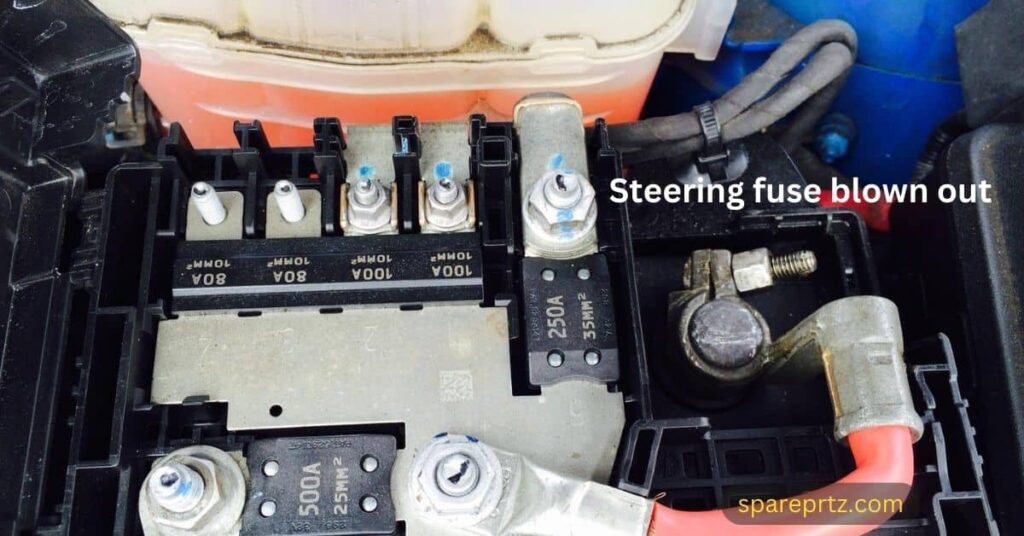
Signs and Symptoms of a Blown Fuse Affecting Power Steering:
How do you know when a fuse for electric power steering blows out? Don’t worry. We are going to mention signs of power steering fuse blown-out problems which help you to indicate this problem.
- You feel difficulty in turning the steering wheel.
- When the power steering motor is not working properly, it produces noise like whining and grinding sounds. It will also be the indicator if you feel such a type of noise.
- If you notice the check engine lights or power steering lights on your dashboard, a fuse will be blown that affects power steering.
- If you notice some electrical components are not working properly, it could be a sign of a blown fuse.
- A blown fuse can damage the power steering pump and may result in power steering fluid leakage and your power steering pump becoming dry. So, leakage of fluid could also be the indicator.
How to Fix a Blown Fuse Affecting Electric Power Steering?
If you experience any of these signs and symptoms, check the power steering system’s fuse box to see if a fuse has blown.
1. Diagnose a Blown Fuse Affecting Electric Power Steering:
A car contains 40 or more fuses grouped in two or more boxes. Use the fuse specification chart to locate the fuse.
First, you have to turn off the engine and find the electric power steering fuse(EPS fuse). The fuse is typically labeled with the word “power steering” or abbreviated as “P/S.”
Check the fuse for any damage like broken filament or blackening. You can also use a multimeter to test the fuse’s continuity. If the multimeter shows no continuity, the fuse is blown.
2. Remove the Blown Fuse:
Once you find the blown fuse, remove the blown fuse with the help of the fuse puller tool. You can also use your hands but be careful. The blown fuse can break down easily, making removing the broken fuse difficult.
3. Insert the New Fuse:
Insert the new fuse with the same amperage rating as the old one. If the size is different, it can cause serious electrical problems. Make sure it’s securely in place.
4. Test the power steering:
Turn on the ignition and check if the power steering works properly. If there is still any problem or the power steering system is not working properly, there might be time to take your car to the mechanic.
Video Guide:
Preventive Measures to Prevent a Blown Fuse:
As we discussed above, a blown fuse can affect the power steering system, which results in serious consequences. So take some preventive measures to avoid such type of situations.
- Regularly check your vehicle’s electrical system.
- Avoid using electrical accessories that draw high power.
- If you notice any sign of power failure mentioned above, don’t waste your time and take your car quickly to the mechanic.
- Always use the correct type and size of fuse according to your vehicle’s requirements.
FAQs:
Q1. Can I Still Drive My Car If the Power Steering Fuse is Blown?
Nothing can stop you from driving your car, but it is not safe.
When your power steering fuse blows, your power steering system will stop working. This means you’ll have to rely on your strength to turn the steering wheel, which can be difficult, especially if you’re driving at low speeds.
Q2. Can a blown fuse affect the hydraulic power steering system?
No, A blown fuse can not affect the hydraulic assist power steering system. But if you are using an electric-assist power steering system, then it can affect you.
Q3. Do Electric Power Steering Systems Have Fuses?
Yes, most electric power steering systems have fuses that protect the EPS control module and electric motor from electrical faults. The fuses are designed to break the electrical circuit if there is an overload or short circuit. This protects the EPS components from damage and prevents a fire hazard.
Conclusion:
if electric power steering suddenly shuts down there may be a reason for a blown fuse. It can result in loss of electrical connection to the power steering function, stiffness of the steering wheel, leakage of fluid, etc.; it is difficult to drive in this situation.
So try to diagnose the problem and fix it as soon as possible. You can do it yourself, but if you are uncomfortable, take your car to the expert one.
Also Read:
- What Happens if You Run Your Power Steering Pump Dry? Consequences, Reasons & Fixes
- Why Is My Heated Steering Wheel Not Working? 5 Reasons And Fixes
- Why Can I Feel the Road Through the Steering Wheel?
- What Causes Milky Power Steering Fluid – Reasons, Symptoms and Fixes
- Color of Power Steering Fluid – Detail of All Colors of Power Steering Fluid



